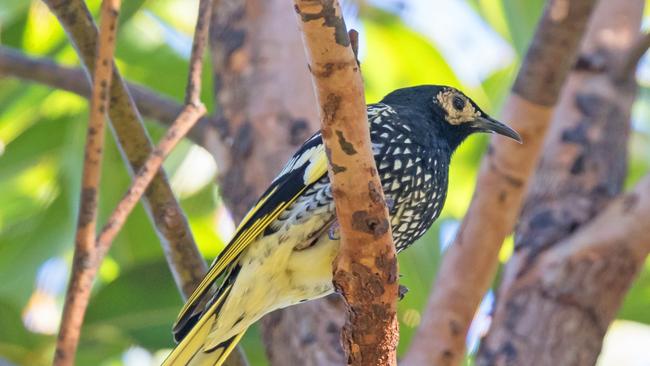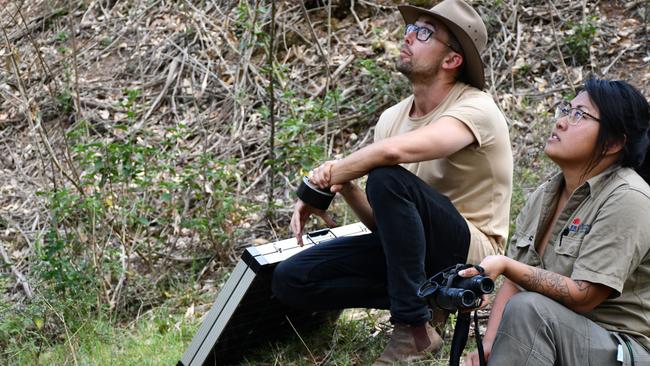Mulgoa: Rare Regent Honeyeater breeds on private land
One of the rarest birds in Australia has successfully bred on a private property in Penrith City.

Penrith
Don't miss out on the headlines from Penrith. Followed categories will be added to My News.
- St Marys: Man charged with attempted murder after crash
- Brooke Fretwell’s family features in new Redkite recipe eBook
One of Australia’s rarest and most endangered birds, the Regent Honeyeater, has successfully bred on a private property in Mulgoa.
The exact number of the total population of the bird is unknown, but it is estimated be less than 1000.
Greater Sydney Local Land Services officer Genevieve Kyi first spotted the adult birds late last year.
She said the conditions for them to breed were perfect, however a successful pair hadn’t been recorded in western Sydney for years.

“Regent Honeyeaters feed on eucalyptus flowers, mistletoe, lerp, and small insects and rely on grassy woodland as habitat,” she said.
“This site was a quiet, undisturbed spot in woodland beside a dam which the birds drank from and bathed in regularly.
“To my delight, it wasn’t long before they built a nest.”
Fellow officer Peter Ridgeway said it was rare for nesting attempts by Regent Honeyeaters to be successful.
“An estimated 66 per cent of Regent Honeyeater nests fail,” he said.
“They face drought, wind which can destroy nests, competition for food, and aggression from other birds as well as predators such as sugar gliders, brush tail possums and lace monitors.”

The officers worked with the Australian National University, Birdlife Australia, and the Office of Strategic Lands to protect the nest with cameras, inspections and a protective collar on the tree.
The efforts paid off, with a chick successfully fledging the nest. The family has since left their nesting area.
Mr Ridgeway said this success reinforced the importance of actively implementing comprehensive and sustainable land management on private and public land.

“We’ve worked closely with the land managers on this property to carry out feral animal control for a variety of species, support native vegetation and control weeds, and have no doubt this gave the birds a better chance of successfully breeding,” he said.
You can help attract native birdlife to your garden or property by leaving out water, keeping logs on the ground and old hollow trees for habitat and planting local native plants.
